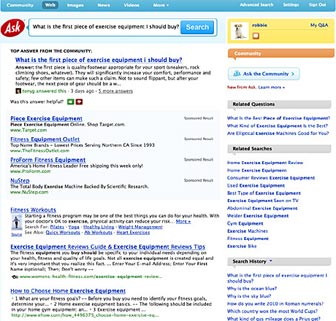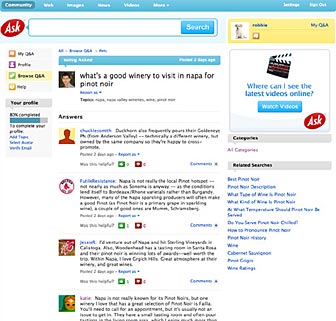Q&A Injected Into the Search Experience Via the Web and the Community
We’ve known that Ask has been working on a new version of Ask.com for months, but now it’s here. Ask is placing new emphasis on the Q&A side of search, and is injecting the Q&A experience directly into the main search experience, which is what SVP of Product Management Tony Gentile tells WebProNews, sets the new Ask apart from other Q&A sites.
Do you think Ask’s Q&A-oriented approach is a good one? Leave a comment to let us know.
He says they’ve taken a hybrid approach, utilizing existing partnerships and new technology that’s been refined over the last six to nine months, to build a new social Q&A experience that’s built directly into Ask’s search capabilities. When Ask doesn’t immediately give you an answer (or the right answer), you can simply ask “the community.”
We asked Gentile to tell us a little about who this community is. Initially, he says, they are using their existing employee base across IAC companies in a private beta. These employees are encouraged to invite their own families and friends to participate. Some journalists have been invited as well. Eventually this will expand. He says they will also implement technologies like Facebook Connect, Twitter, LinkedIn, OAuth, etc. to get users to bring in people from their own networks.
Also as a result of the social media aspect, he says profiles can lend credibility to answers. For example, if you answer a question and your LinkedIn profile is attached to it, that can show your experience in a field related to a question you have answered.
This is where the new Ask.com comes in as a potentially useful tool for businesses. Businesses may want to answer questions about products, and even create relationships with potential customers. An interesting nugget Gentile shared is that in analyzing the questions Ask receives, the majority of them are either related to “how do I spend my time?” or “how do I spend my money?”

Ask has the ability to work at the local level, as well. Gentile says they have the ability to analyze questions of both an implicit and an explicit local nature. For example, if someone asks, “what’s the best burrito shop in San Francisco?”, that’s clearly a local question, and they can route it accordingly to people in and who have visited San Francisco.
Another type of local question, however, is something like “who’s a babysitter I can trust?” That’s also a local question, but it doesn’t name a specific city. Ask says it has the ability to figure it out, and again, route accordingly. It calls upon signals in the user profiles. If a user gives permission, they will use location.
Here are the main features of the new Ask.com (as described by the company):
– Proprietary semantic search technologies: Finds the most relevant, quality answers across the Web, and displays them at the top of the page. No click-throughs required.
– The largest Q&A database on the Web: More than 500 million questions and answers indexed, and the ability to quickly extract Q&A pairs from hundreds of thousands of sources.
– Ask.com community: Leverages proprietary search categorization to route questions and solicit high-quality answers from community members based on their interests and areas of knowledge.
– New user interface: Improved UI makes it easy to ask and answer questions, highlights advancing and trending questions from the Ask community throughout the site.

What do you think of the new Ask.com? Let us know in the comments below.
Warren Knight thanks Chris Crum
